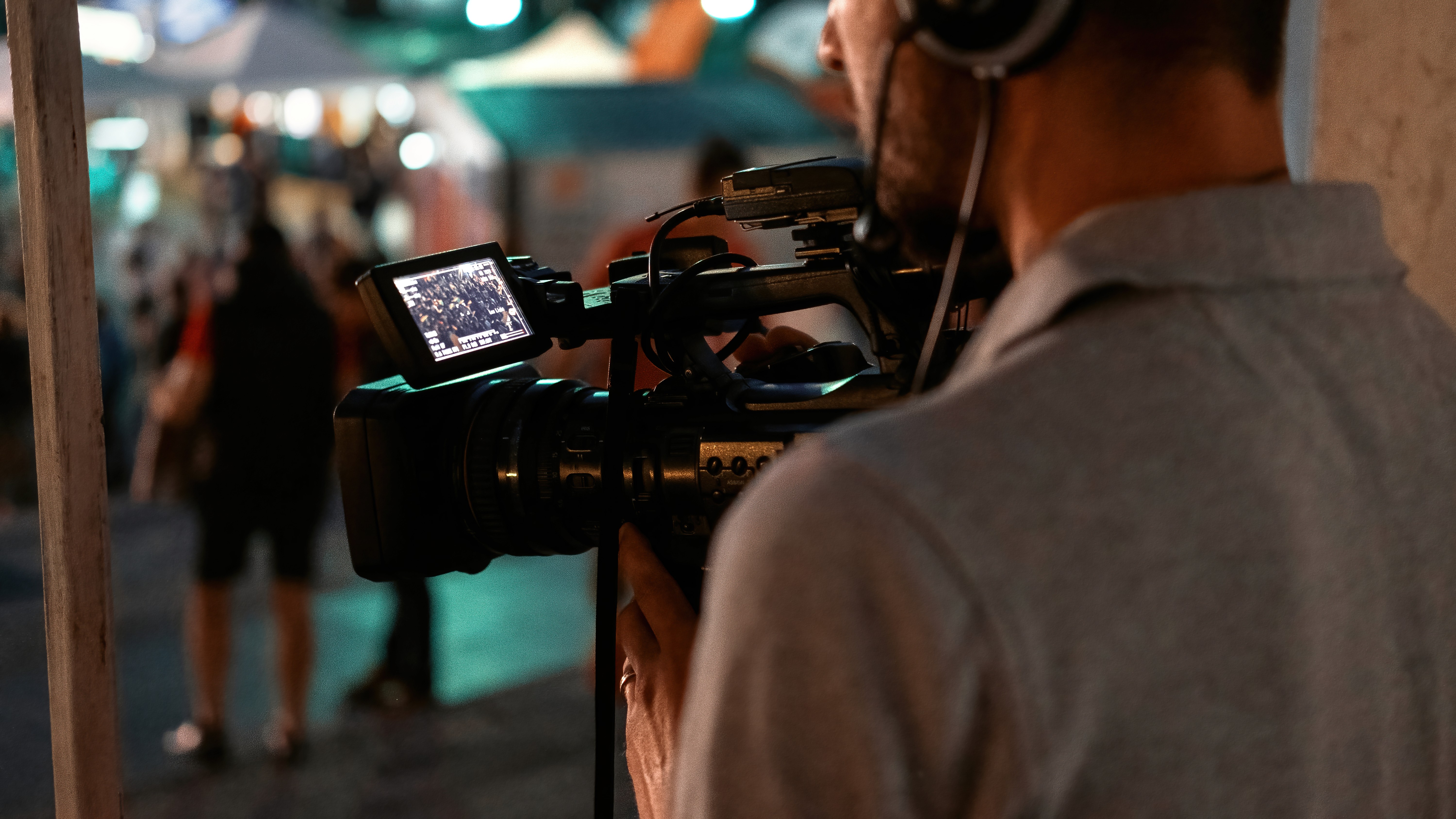Blog
Live streaming is a powerful way to connect with audiences worldwide, but to make the most of this technology, you need a reliable and high-quality equipment setup. This guide will walk you through five essential steps to create an effective live streaming equipment setup for events, ensuring your broadcast is professional and engaging.
1. Choosing the Right Equipment
Cameras
The quality of your video is critical to the success of your live stream. Invest in high-quality cameras for live streaming that offer clear, crisp images. Depending on the scale of your event, you might need multiple camera setups to capture different angles and provide a dynamic viewing experience.
Types of Cameras Suitable for Live Streaming:
Professional Camcorders: Offer robust features and connectivity options.
DSLRs: Provide excellent image quality with versatility in lens choices.
Action Cameras: Useful for dynamic, movement-based events like sports.
Microphones
Audio quality is just as important as video quality. Use professional-grade microphones to ensure clear sound. Consider using lavalier mics for speakers and panelists, and directional microphones for capturing ambient sound.
Types of Microphones for Various Settings:
Lavalier Microphones: Great for hands-free operation.
Shotgun Microphones: Ideal for focusing on sound from a particular direction.
Condenser Microphones: Excellent for capturing detailed soundscapes.
Lighting
Proper lighting enhances the video quality and makes the broadcast look professional. Use softbox lights or LED panels to create even lighting. Avoid harsh shadows and ensure your subjects are well-lit.
Lighting Techniques for Improved Visuals:
Three-Point Lighting: Key light, fill light, and back light to shape and define subjects.
Diffusion: Soften light to reduce shadows and glare.
Color Temperature: Match or creatively use color temperatures to enhance mood.
2. Ensuring a Stable Internet Connection
Bandwidth Requirements
A stable internet connection is essential for a smooth live stream. Check the bandwidth requirements of your streaming platform and ensure your connection can handle the upload speed. As a general rule, a minimum of 5 Mbps upload speed is recommended for HD streaming.
Tips for Maximizing Internet Stability:
Prioritize Traffic: Use Quality of Service (QoS) settings on your router to prioritize video streaming traffic.
Backup Connection: Have a backup internet connection in case of primary failure.
Wired vs. Wireless
For reliability, a wired Ethernet connection is preferable over Wi-Fi. Wired connections offer more stable and consistent speeds, reducing the risk of interruptions during your live stream.
Comparative Advantages:
Wired Connections: More reliable, less interference, and typically faster speeds.
Wireless Connections: More flexibility and easier setup in difficult-to-wire areas.
3. Selecting the Best Streaming Platform
Platform Features
Choose a streaming platform that offers the features you need, such as multi-camera support, chat functionality, and analytics. Popular options include YouTube Live, Facebook Live, and Twitch.
Key Features to Look For:
Interactive Tools: Chat, donations, and subscriber alerts.
Analytics: Viewer data, engagement metrics, and performance insights.
Audience Reach
Consider where your target audience is most active. Different platforms cater to different demographics, so select a platform that aligns with your audience's preferences to maximize reach and engagement.
4. Optimizing Your Equipment Setup for Quality
Audio and Video Settings
Adjust your camera settings for optimal video quality. Set the resolution to at least 1080p for a high-definition stream. Ensure your audio settings are configured correctly to avoid issues like echo or feedback.
Optimization Tips:
Frame Rate: Choose a frame rate that matches the content’s motion level.
Exposure Settings: Adjust for natural or artificial lighting conditions.
Testing and Troubleshooting
Test your entire setup before going live. Check the audio, video, and internet connection to identify and resolve any issues. Run a test stream to a private channel to ensure everything works smoothly.
Checklist for a Smooth Launch:
Dry Runs: Conduct full rehearsals with all equipment and operators.
Monitor Outputs: Continuously monitor the stream’s output on different devices.
5. Engaging Your Audience
Interactive Features
Use interactive features to keep your audience engaged. Live chats, polls, and Q&A sessions can make the viewing experience more interactive and enjoyable.
Strategies to Enhance Viewer Participation:
Call to Actions: Encourage viewers to participate in discussions.
Real-Time Engagement: Acknowledge viewer comments and questions live.
Real-Time Interaction
Encourage real-time interaction by responding to comments and questions during the live stream. This helps build a connection with your audience and makes them feel involved.
Tools for Effective Interaction:
Moderation Tools: Use chat moderation tools to manage viewer interactions.
Engagement Metrics: Track how viewers interact to refine future streams.
Conclusion
Creating an effective live streaming equipment setup for events involves careful planning and attention to detail. By choosing the right equipment, ensuring a stable internet connection, selecting the best platform, optimizing your setup, and engaging your audience, you can deliver a professional and engaging live stream. With these best practices, you'll be well on your way to hosting successful live streaming events.






